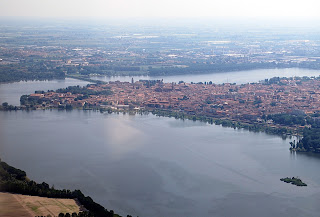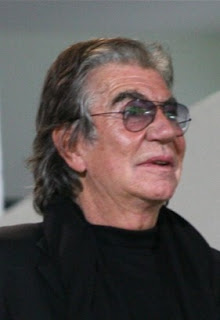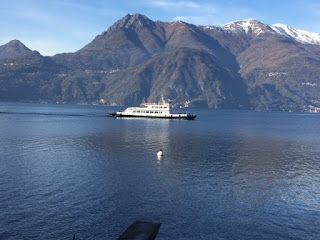Sicilian changed his name to sound non-Italian
The boxer Johnny Dundee, who was a child when his family emigrated
to the United States, was born in Sciacca, a town on the southwest coast of
Sicily, on this day in 1893.
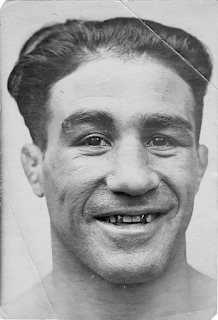 |
| Johnny Dundee contested more than 330 professional bouts |
Dundee, regarded by many boxing historians as the first of
the great Italian-American fighters, had more than 330 fights in a 22-year
career in the ring.
At the peak of his career, in the 1920s, Dundee won both the
world featherweight and world junior-lightweight titles.
Dundee’s real name is thought to have been Giuseppe Curreri,
although some boxing records have his second name as Carrora. The large numbers of Italian immigrants
arriving in New York at around the turn of the 20th century, few of
whom spoke any English, sometimes overwhelmed officers at the city’s processing
station on Ellis Island and mistakes in recording details were common.
There are variations, too, in accounts of how old Giuseppe
was when his family uprooted him from his childhood home, with some saying he
was just five but others suggesting he was nine.
What seems not in dispute is that his family joined other
Italian families in the Lower East Side of Manhattan, a tough area of
overcrowded slums where gang warfare was rife and young men such as Giuseppe
needed to learn quickly how to look after themselves.
It was as a street kid that Giuseppe was noticed by the
boxing promoter Scotty Monteith, who would scour the working class
neighbourhoods looking for potential fighters.
He noted that, though smaller and younger than many gang members, Giuseppe
would rarely be on the losing side in a scrap.
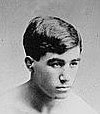 |
| A young Dundee pictured early in his career |
He approached the youngster and asked if he would be
interested in taking his fighting talent into the ring. Naturally, given how little money his family
had, he jumped at the chance – even though he was told at the outset he would
have to change his name, at least when he was in the ring.
Racial stereotyping and prejudices were rife in New York at that time.
Italians, particularly Sicilians, were regarded with suspicion, with many other
ethnicities believing them to be dishonest and cowardly.
Most of the professional fighters were from Irish stock and
Monteith knew he would find it hard to sell tickets to watch an Italian. The story goes that he proposed he called himself ‘Johnny’
because it was a popular name in the Irish community and ‘Dundee’ because that
was the Scottish town from which his own family originated.
The name change earned him a nickname – ‘the Scotch Wop’ –
that would be unthinkable in today’s politically correct times.
As Dundee he won his first fight and went on to enjoy a
career that brought him almost 200 wins, including 17 by knock-out, despite the
general view that he lacked punching power.
He suffered only two knock-outs himself in his whole career.
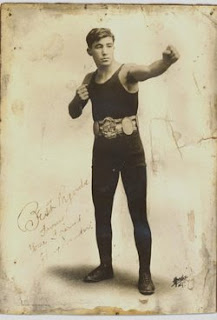 |
| Dundee was renowned for his quick feet and skilful glovework |
Apart from his quick feet and canniness in the ring, Dundee’s other great
quality was his patience. His first
attempt at a world title, against the world featherweight champion Johnny
Kilbane, came in his 87th fight and ended in a
draw.
He then had to wait eight more years, until fight number 265
in November 1921, for another opportunity.
This time, he was successful
as opponent George ‘KO’ Chaney was disqualified, and Dundee was crowned world
junior lightweight champion.
The following year the boxing board of New York recognised
him as the world featherweight champion, when he
beat Danny Frush by knockout.
Dundee successfully defended his junior lightweight crown
three times in all and though he lost in to Jack Bernstein in 1923 he regained
in a rematch with the same fighter later in the year. Also in 1923, he unified the featherweight title
by defeating Eugene Criqui.
Dundee lost both his titles in 1924 yet continued to box
for another eight years before retiring in 1932 at the age of 38. Only two professional fighters in history had
contested more bouts and he is widely recognised as among the top five
featherweights of all time.
Despite that, he fell on hard times in later life and was
grateful for the generosity of his long-time supporter Ed Sullivan, the TV variety
show host, whom he had befriended as a cub reporter and at whose wedding he was
best man, in coming to his aid when he was almost destitute.
He died in New York in 1965 at the age of 71.
 |
| The view from Piazza Scandaliato in Sciacca |
Travel tip:
The town of Sciacca, in the province of Agrigento on the
southwest coast of Sicily, has a large fishing port and despite the presence of
thermal baths is not a notable tourist destination, although it has a rich
history going back to the seventh century BC, when the island was under Greek
control. Its medieval centre has changed little over the years, with many
streets and alleys too narrow for cars. At
the edge of the centre, the broad Piazza Scandaliato offers panoramic views
across the harbour.
 |
| The well-preserved Temple of Concordia in Agrigento |
Travel tip:
Around 62km (40 miles) along the coast southeast of Sciacca,
the provincial capital Agrigento, a city of 55,000 inhabitants built on a
plateau overlooking the sea, is regularly visited by tourists largely for the
ruins of the Greek city Akragas, a UNESCO World Heritage Site generally known
as the Valley of the Temples and, at 1,300 hectares, the largest archaeological
site in the world. Situated on a ridge
rather than in a valley, the site features a series of temples, the most
impressive of which is the Temple of Concordia, one of the largest and best
preserved Doric temples in the world, with 13 rows of six columns, each 6m
(20ft) high, still virtually intact.
Also on this day:












